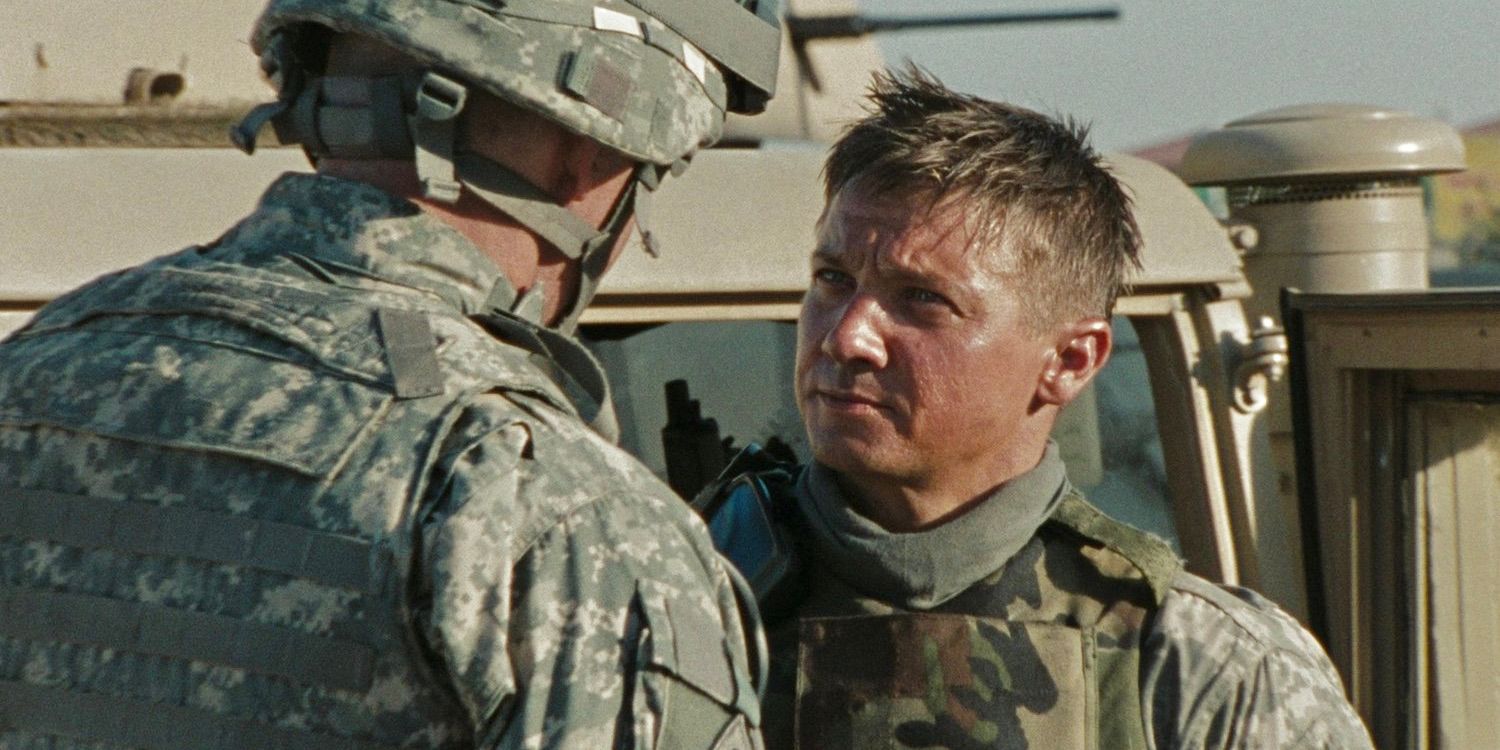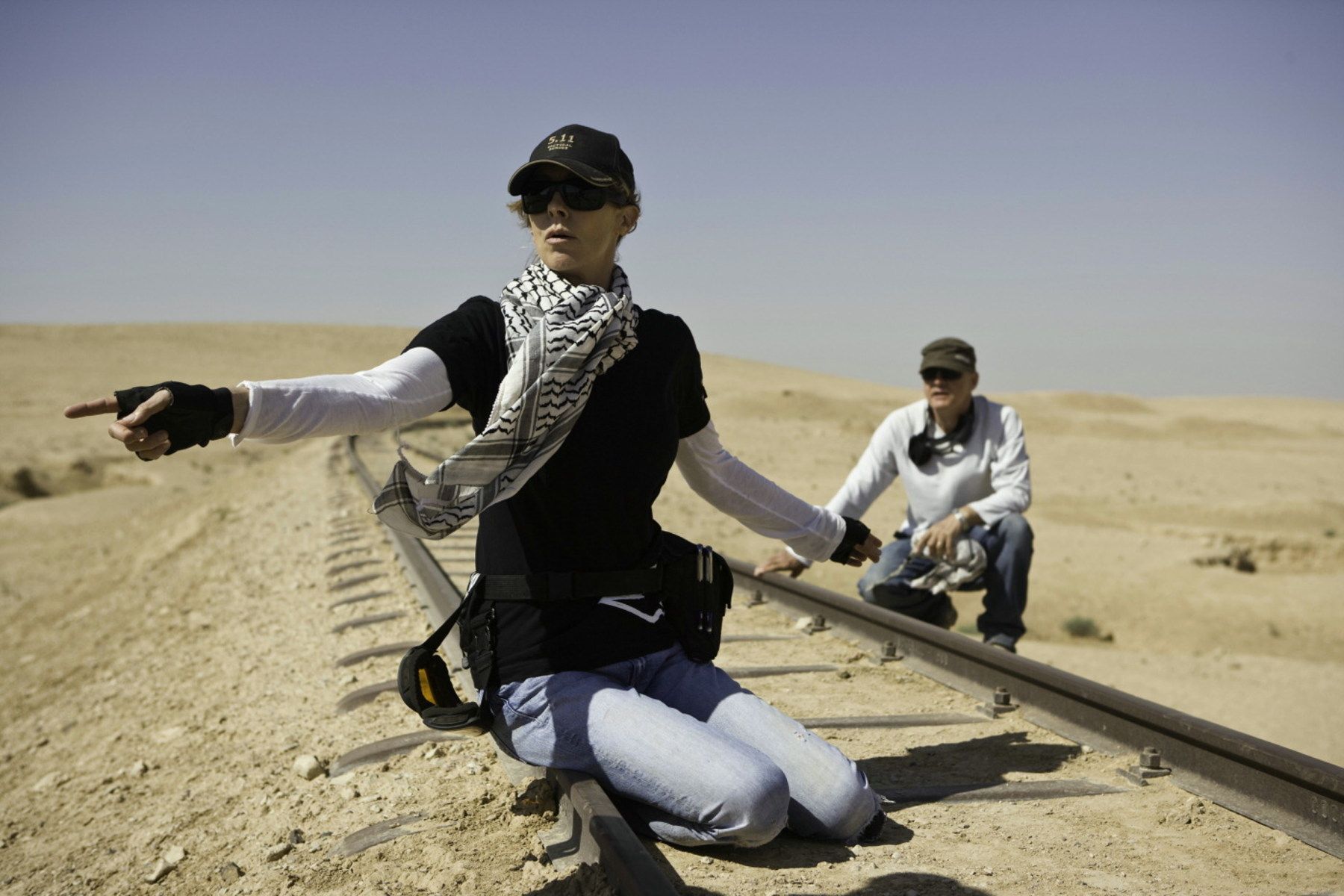With her Iraq War-set thriller The Hurt Locker, Kathryn Bigelow iconically became the first female filmmaker to receive the Oscars for Best Director and Best Picture at the Academy Awards. Universally hailed by critics, The Hurt Locker was lauded for its immersive storytelling and tension-building atmosphere, impressing audiences during an era when contemporary-set war dramas typically received a chilly reaction as the conflict in Iraq continued well into 2011. On the road to its history-making victories at the Academy Awards, The Hurt Locker was featured on countless lists of the year's best films at many major news and culture publications around the globe, along with significant nods from the most prestigious and influential award-voting bodies. However, outside its critical acclaim, The Hurt Locker was far from a major box-office success, earning less than $50 million worldwide against a production budget of $15 million, placing it among the lowest-grossing Best Picture winners of all time.
Set during the early years of the Iraq War, The Hurt Locker stars a fresh-faced Jeremy Renner as Sergeant William James, the leader of a U.S. bomb disposal team working in Baghdad. As James' days dwindle before receiving a new assignment, he and his teammates must grapple with the severe pressure of their military position and place within the larger world away from the conflict. Nail-bitingly suspenseful and expertly crafted by Bigelow and her collaborators, The Hurt Locker steers clear of the traditional expectations of expansive war epics to create a visceral and enveloping war film pertinent to the time of its 2009 release. Let's examine some of the contradicting factors that made The Hurt Locker simultaneously a box-office disappointment and a multiple Oscar winner:
'The Hurt Locker's Unconventional Theatrical Release
The Hurt Locker made its world premiere in competition at the Venice Film Festival in 2008, nearly 18 months before the movie's historic Academy Award wins. While Venice is often used as a launch pad for award season campaigns (La La Land, The Shape of Water, Roma), The Hurt Locker had yet to secure a North American distributor by the end of the festival. However, after the movie's North American premiere at the Toronto International Film Festival a few weeks later, it was finally purchased for North American distribution for a modest $1.5 million by Summit Entertainment, an indie-focused production company and distributor. Summit Entertainment knew it could be a gamble for audiences, especially since other films of the time centered around the Iraq War had been poorly received overall.
Skipping the standard fall or winter release strategy of many Oscar hopefuls, The Hurt Locker opened in limited release in the United States on June 26, 2009. That weekend playing in 4 theaters, the movie made $145,352, a typically high per-screen-average for the times. Yet as the film's theatrical tour expanded leading up to the 2010 Academy Awards, it peaked domestically at just over $17 million in earnings and less than $50 million globally. Moreover, it was on less than 600 screens at its height, meaning The Hurt Locker never even reached a wide theatrical release. In dramatic contrast, James Cameron's Avatar, another major Oscar contender released in the same year, made over $77 million in the U.S. during its opening weekend alone and was in nearly 3,500 theaters nationwide. Adding to the fascinating chronicle of The Hurt Locker, the film remains one of the lowest-grossing Best Picture winners of all time, excluding the pandemic-affected years of 2021 and 2022.
'The Hurt Locker's Road To Oscar Victory
Although first introduced to audiences in 2008, The Hurt Locker was not eligible for Academy Awards contention the following year since rules require a movie to be publicly screened within that calendar year, meaning the film had to hold onto its Oscars ambitions until 2010. This divergence from the traditional fall release makes The Hurt Locker stand out from expectations of a successful Oscar campaign, with similarly unconventional campaigns represented through recent Best Picture winners like CODA. Regardless of its lagging theatrical release and lukewarm box-office success, The Hurt Locker was wholly championed by film critics, who praised the movie's frenetic tension and absorbingly intimate spin on the war thriller. From the film's dynamic craft to Bigelow's laser-focused direction to Renner's breakthrough performance, critics celebrated The Hurt Locker and helped boost its profile as that year's awards season unfolded. By the end of 2009, the movie found its way onto almost every "best films of the year" list from organizations and publications, including the American Film Institute, the New York Times, Roger Ebert, and Sight & Sound.
As 2010 began and awards season was in full swing, The Hurt Locker began to gain tremendous momentum as the 82nd Academy Awards grew nearer. While the Hollywood Foreign Press voters for the Golden Globes chose Avatar as the winner for Best Motion Picture, Drama, and Bigelow's ex-husband James Cameron for Best Director, The Hurt Locker was notably nominated in both categories, along with Best Screenplay. A turning point for the film came at the British Academy of Film and Television Awards, where The Hurt Locker won six of the biggest prizes of the evening, including Best Picture, Director, Editing, and Original Screenplay. In the following weeks, it was rewarded the top prizes at the Director's Guild and Writer's Guild of America Awards, giving the movie a substantial final push to the Oscars. Heading into the Academy Awards ceremony, The Hurt Locker had an impressive nine nominations, tying with Avatar for the highest number of the evening. By the night's conclusion, The film had cleaned up with an incredible six wins — Best Sound Editing, Best Sound Mixing, Best Film Editing, Best Original Screenplay, Best Director, and of course, Best Picture.
Not only was The Hurt Locker ambitiously designed and skillfully composed, but it also broke typical expectations of what an Oscar-winning film could be. Despite its downfalls at the box office, the scrappy small-scale independent production of the movie proved to be one of the most critically celebrated of its time, especially standing out in a year when Avatar was pushing the boundaries of technology, scale, and financial success in filmmaking. Moreover, Bigelow's entirely deserved victories at the Oscars were significant moments in the history of cinema, an art and industry where female voices are still underrepresented, even over a decade since her unprecedented achievements. Since The Hurt Locker's Oscar sweep, only one female director has repeated the triumphs for Best Director and Best Picture, Chloé Zhao, for Nomadland in 2021. Sian Header also contributed to women in the history of the Academy Awards last year for her Best Picture win with CODA, meaning that only three women have won the biggest prize of the Oscars in the nearly 83 years of the ceremony's history.




